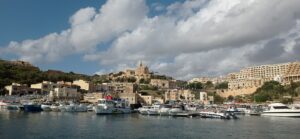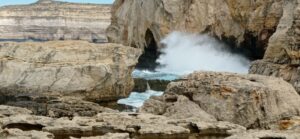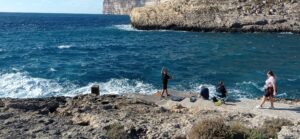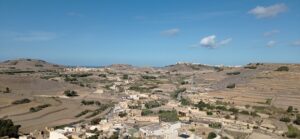|
Article English Reading Level: C1 Vocabulary Practice: click here to learn and practise the words in bold |
A trip to Gozo and Homer’s Work

It is said that Gozo is none other than Homer’s idyllic island of Ogygia, mentioned in his book, Odyssey. The cave near to Ramla Bay is also believed to be where the beautiful nymph Calypso kept Odysseus as a prisoner for seven years. One thing that’s certain is that Gozo is an island of contrasts situated just a short ferry ride from Malta.
Gozo seems to have it all, with its green fields, arid limestone outcrops and villages with winding streets where time seems to stand still; the bustling historical and cultural city of Rabat, beaches ranging from the red sands of Ramla Bay to the rocky beach of Xlendi; the national shrine of Ta’Pinu, two bronze age temples at Ggantija; saltpans at Xwejni and various look out points with breath-taking panoramic views and a paradise for scuba lovers.
So, one sunny Saturday morning, a cosy group of Maltalingua students and their tour guide, set off to Ċirkewwa. We drove across to the North of Malta, past the saltpans in Qawra, which our guide told us had been very important in Roman times still producing salt to this day, past vineyards whose grapes would eventually be used to make the quite palatable Maltese wines, finally arriving in time for an early ferry to Gozo. The ferry across the Gozo channel to Mġarr took us past the island of Comino where suddenly Mġarr came into view with the Church of Our Lady of Lourdes standing majestically on the promontory overlooking harbour.
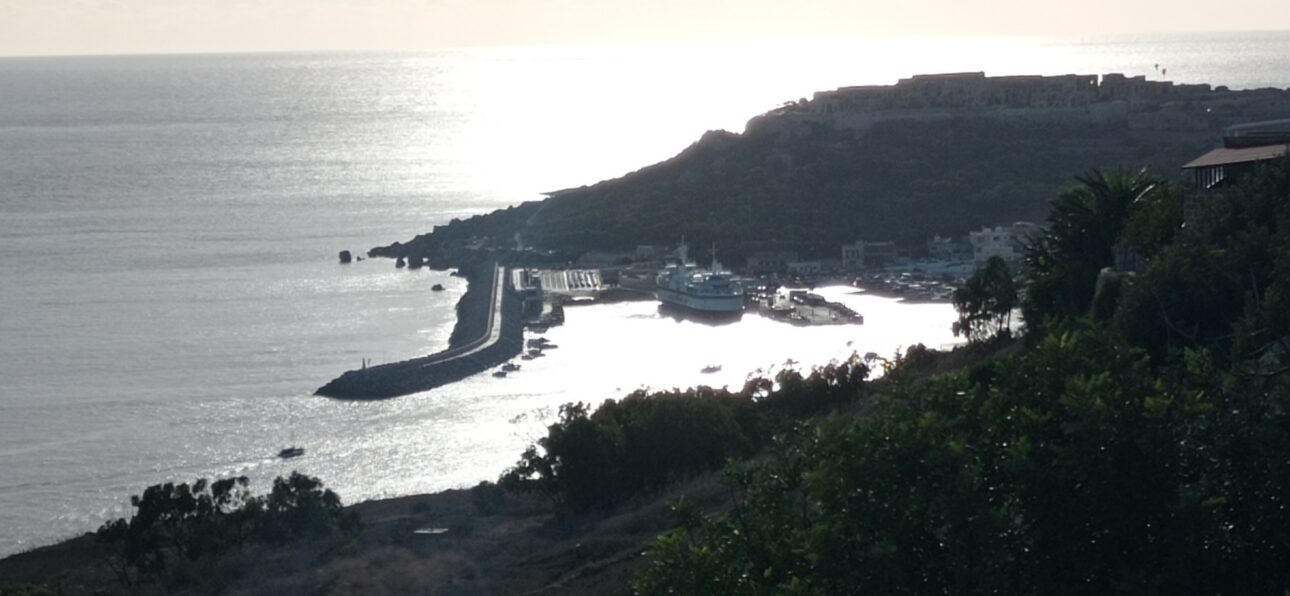
Mgarr’s Countryside and Dwerja Bay are popular places to visit in Gozo
A short drive across a greener countryside from Mgarr and through villages with limestone houses brought us to our first stop – Dwerja. It was a blustery day so everyone scrambled over the rocks to watch the waves pounding against the sheer limestone cliffs.
In the distance we could see the tower – one of several doted around Gozo and Malta, which in olden times were used as lookouts as both islands were frequently subject to raids by corsairs. These days the towers are managed by the National Trust of Malta (Din l-Art Ħelwa). The tower at Dwerja has recently been restored thanks to European funds obtained from the Malta Tourism Authority.
Dwerja is popular with scuba divers due to the clarity of the water and the abundance of interesting marine life. The Blue Hole, for example, is about 15 metres deep with an underwater window leading into the open sea. The walls of the hole are covered in sponges, colourful coral tubeworms, and other marine life.
From Dwerja we went to Rabat where we explored the Citadella with its stunning 360° views across Gozo.
 Did you know that Rabat, also known as Victoria was named in 1897 in honour of the British monarch to mark her Jubilee.
Did you know that Rabat, also known as Victoria was named in 1897 in honour of the British monarch to mark her Jubilee.
The village of Xlendi, Calypso’s Cave and Ramla Bay – A must see!
After exploring the winding streets of Rabat, we drove down through the valley to Xlendi. We all enjoyed the unexpected beauty of the cliffs on either side of this narrow creek. Again, there was another tower on the headland which we had time to walk to except most students couldn’t resist the prospect of a winter swim. Xlendi is popular with locals and tourists alike – its sandy beach is tiny with most people swimming off the ladders into the deeper sea which is really salty and wonderfully buoyant. Although the sea was rather choppy some intrepid Maltaingua students jumped in from the diving board. Martin from Germany was one of them, watched by his wife Anika. She decided to save that experience for another time and just sit on the steps as the sea water rose and fell over her. Quite refreshing especially when their own country is in the depths of Winter! Olivier from Paris took the opportunity to catch some Winter sun relaxing on his Malta souvenir towel for the occasion. ‘ I really enjoyed my time at Maltalingua and going on excursions.’
From Xlendi it was time to head to Calypso’s Cave and look out over Ramla Bay – an unusual beach since it has red sand apparently due to a lot of iron in the rocks that over the centuries eroded to form the beach. For anyone planning a return trip – and many of our Maltalingua students come back year after year – it’s worth noting that in the Summer months Ramla Bay has life guards, sun loungers for hire as well as reasonable eateries behind the beach itself. But in Winter it’s a peaceful, almost deserted haven for people who love to walk or run beside the sea.
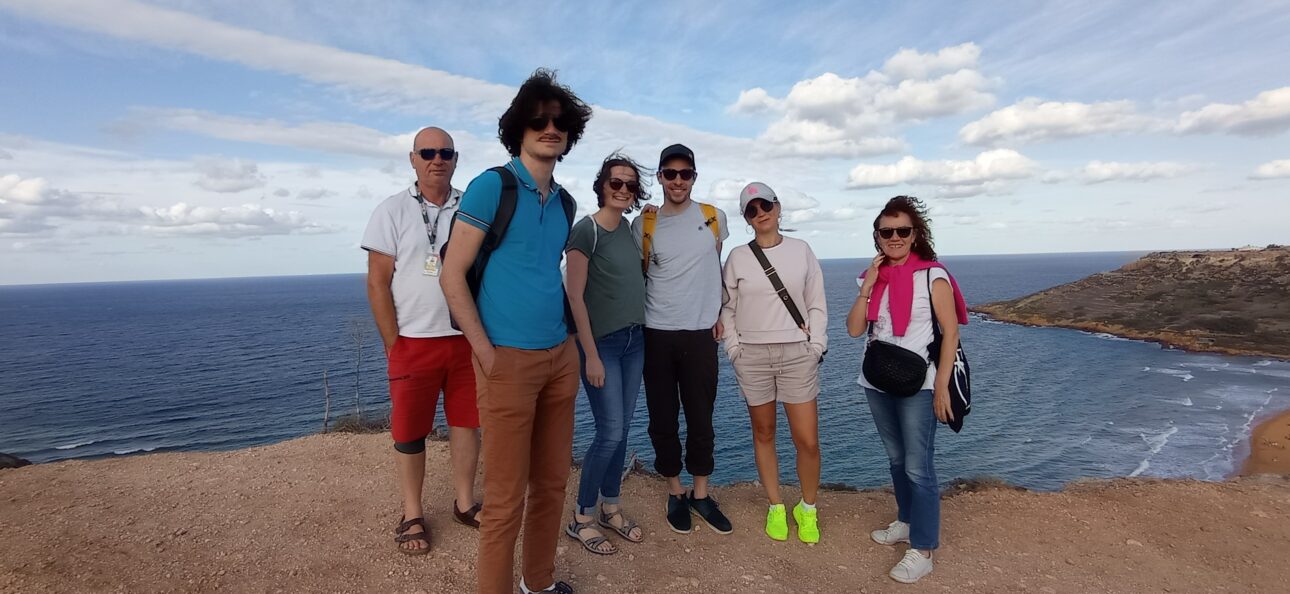
Students standing on top of Calypso’s Cave
Was Calypsos’s Cave really where Odysseus spent seven years a prisoner of Calypso’s love before Zeus intervened and he was able to start the long voyage home to his wife Penelope? Who can ever really know?
After admiring the views over Ramla Bay, we drove to Ghajnsielem for one last panoramic view of Malta and Comino. It was time to return, so we reluctantly drove down to Mgarr to take the ferry back to Malta. So, Gozo, we will see you again!
Author: Gillian Pritchett (CELTA) – read her profile on Maltalingua’s website.
| Want to Read more about Homer? Check out this book by Adam Nicholson – The Mighty Dead: Why Homer Matters (2015). You can practise your English whilst learning more about Homer – a win win! |

